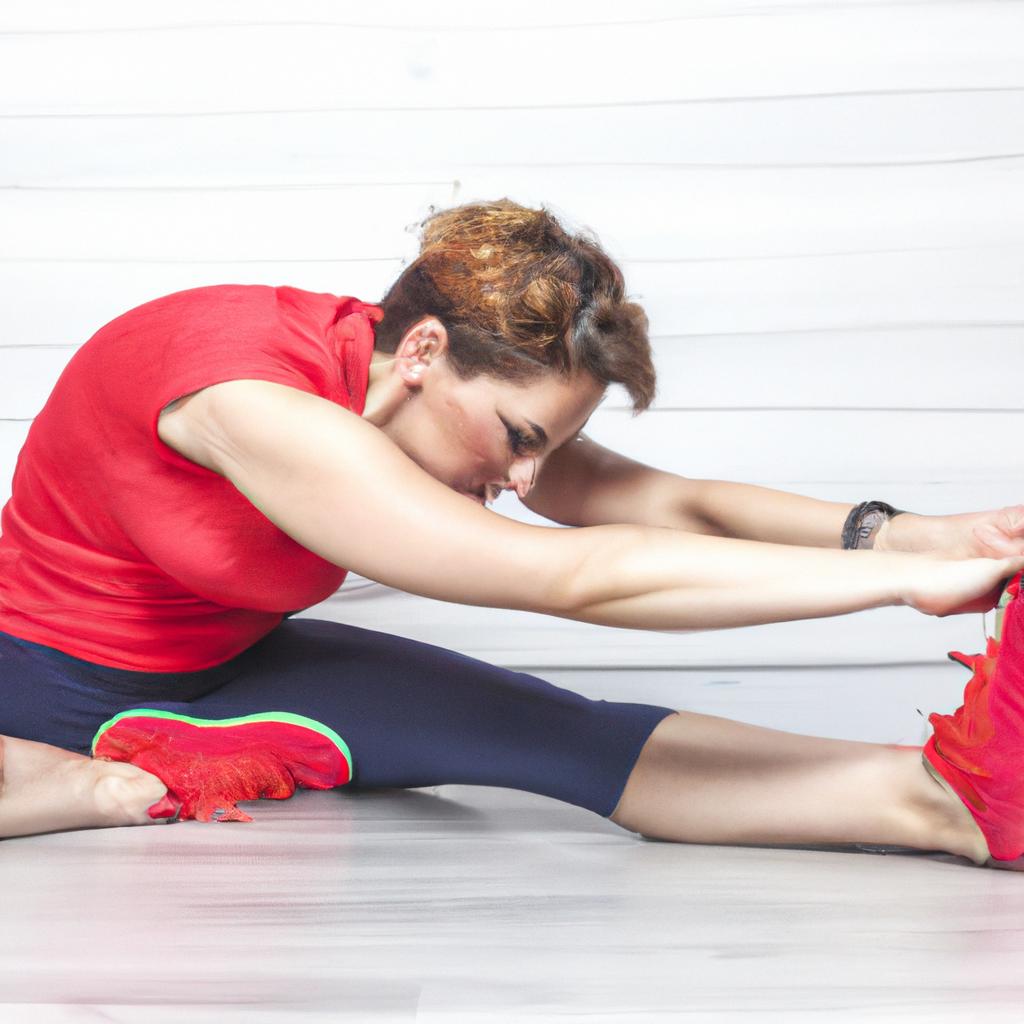**”The Importance of Flexibility Training for Injury Prevention: How Regular Stretching Can Enhance Performance and Longevity in Athletes”**
The Importance of Flexibility Training for Injury Prevention: How Regular Stretching Can Enhance Performance and Longevity in Athletes
In the world of athletics, performance enhancement and injury prevention are paramount. While strength and endurance training often take center stage, flexibility training deserves equal attention. This blog post will delve into the importance of flexibility training for injury prevention and how regular stretching can enhance performance and longevity in athletes.
Understanding Flexibility Training
Flexibility training involves exercises that stretch and lengthen muscles, improving the range of motion around joints. It encompasses various methods, including static stretching, dynamic stretching, and proprioceptive neuromuscular facilitation (PNF). Regular flexibility training not only enhances athletic performance but also plays a crucial role in reducing the risk of injuries.
Static vs. Dynamic Stretching
Static stretching involves holding a stretch position for a specific duration, typically 15 to 60 seconds. This method is effective for lengthening muscles post-workout. For example, after a long run, a runner might engage in static stretches such as quadriceps and hamstring stretches to help relax and elongate the muscles. On the other hand, dynamic stretching incorporates movement and is often used as part of a warm-up routine. For instance, leg swings, walking lunges, and arm circles can prepare the muscles for vigorous activities. Dynamic stretching helps increase blood flow to the muscles and enhances overall performance by activating the muscles that will be used during the workout.
Proprioceptive Neuromuscular Facilitation (PNF)
PNF is a more advanced form of flexibility training that combines stretching and contracting the targeted muscle group. Often used in rehabilitation settings, PNF can significantly improve flexibility and range of motion. This technique typically involves a partner who assists in stretching; for example, during a hamstring stretch, the partner may gently push the leg while the athlete resists the stretch. PNF is particularly effective due to its ability to facilitate both muscular relaxation and improved neuromuscular control, making it a valuable tool for athletes looking to enhance their flexibility.
The Link Between Flexibility and Injury Prevention
Injuries in athletes often result from muscle imbalances, tightness, and lack of proper range of motion. Consequently, incorporating flexibility training into an athlete’s routine can mitigate these risks.
Reduced Muscle Tightness
Muscle tightness can lead to strains and sprains. When muscles are tight, they are more susceptible to injury during sudden movements or changes in direction. Regular stretching helps maintain optimal muscle length, therefore reducing the likelihood of injuries. For example, athletes who engage in sports that require explosive movements—like sprinting or jumping—benefit immensely from flexibility training. Stretching helps to prepare the muscles for the stress they will encounter during these activities.
Improved Joint Stability
Moreover, flexibility training enhances joint stability. Increased flexibility around a joint allows for better mechanics during physical activities. This improved joint function helps distribute loads more evenly, reducing the risk of overuse
Improved Joint Stability
Moreover, flexibility training enhances joint stability. Increased flexibility around a joint allows for better mechanics during physical activities. This improved joint function helps distribute loads more evenly, reducing the risk of overuse injuries and ensuring that the muscles surrounding the joint can work effectively together. For example, in sports like basketball or soccer, where quick pivots and changes of direction are common, flexible hip and knee joints can help prevent injuries like ligament tears or tendonitis.
Enhancing Performance Through Flexibility
Beyond injury prevention, flexibility training can significantly enhance athletic performance. When athletes possess greater flexibility, they can achieve a wider range of motion, which translates into more efficient and powerful movements.
Increased Power and Efficiency
For instance, in activities such as weightlifting, improved flexibility can lead to better lifting techniques, allowing athletes to perform movements more explosively and with proper form. In sports that require kicking, such as soccer or martial arts, increased flexibility in the hips and legs can result in more
FAQ
What are the main types of flexibility training?
The main types of flexibility training include static stretching, dynamic stretching, and proprioceptive neuromuscular facilitation (PNF). Static stretching involves holding a stretch for a duration, dynamic stretching incorporates movement as part of a warm-up routine, and PNF combines stretching and contracting the targeted muscle group, often with a partner’s assistance.
How does flexibility training help prevent injuries?
Flexibility training helps prevent injuries by reducing muscle tightness and improving joint stability. Tight muscles are more prone to strains and sprains during sudden movements, while increased flexibility around joints enhances mechanics and load distribution, decreasing the risk of overuse injuries.
Can flexibility training enhance athletic performance?
Yes, flexibility training can significantly enhance athletic performance. Greater flexibility allows athletes to achieve a wider range of motion, leading to more efficient and powerful movements. For example, improved flexibility can enhance lifting techniques in weightlifting and increase kicking power in sports like soccer and martial arts.















Post Comment